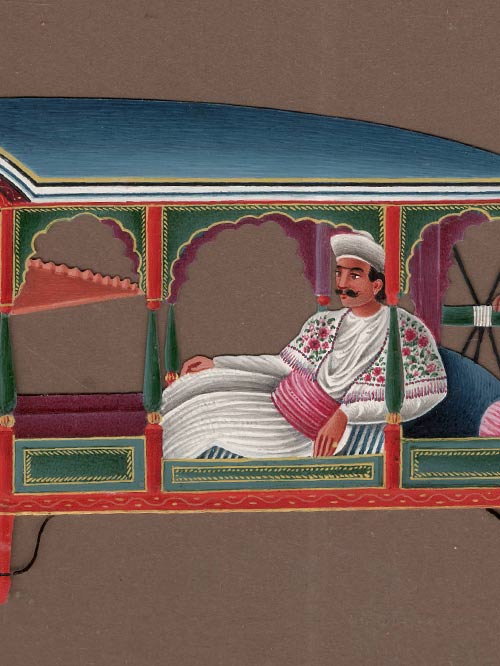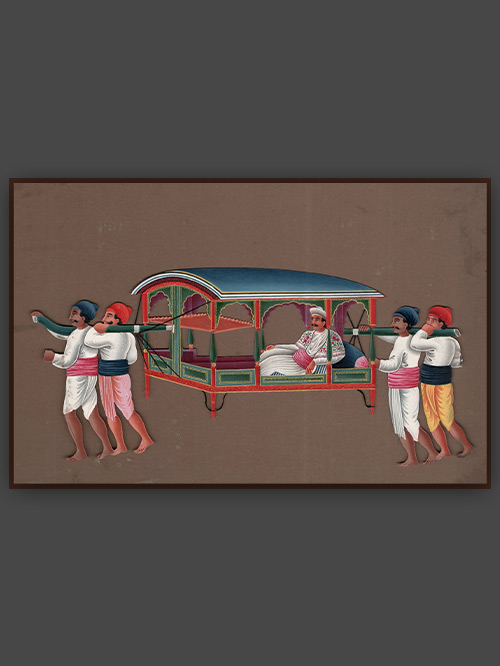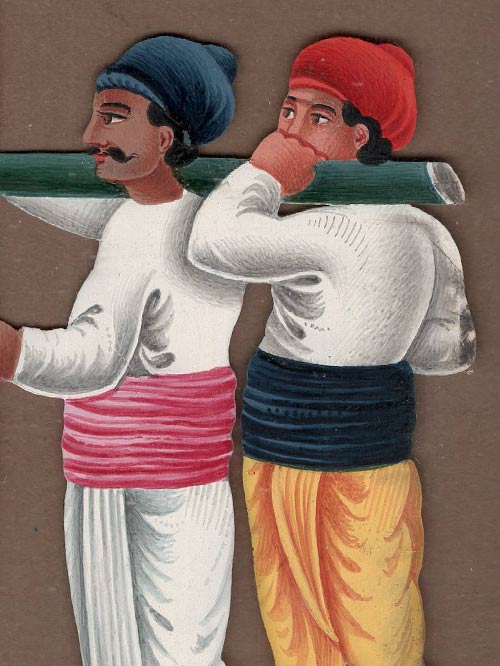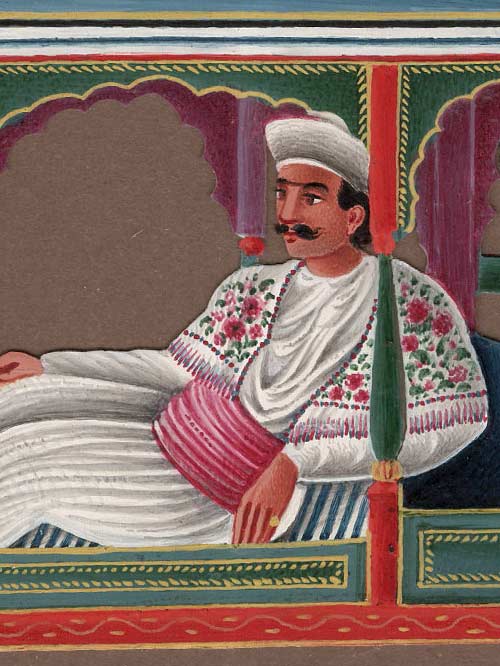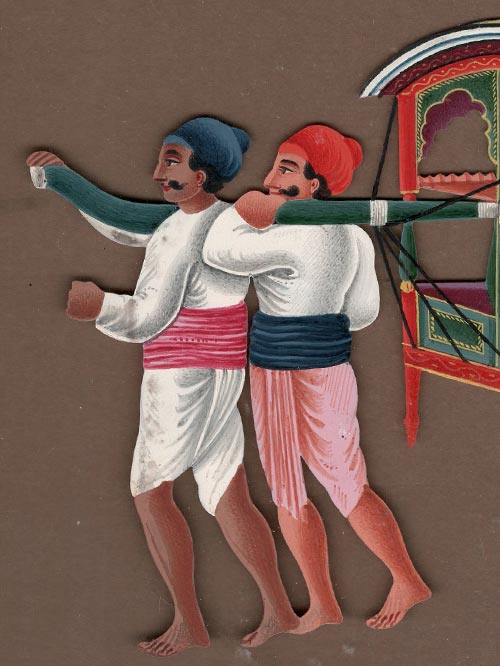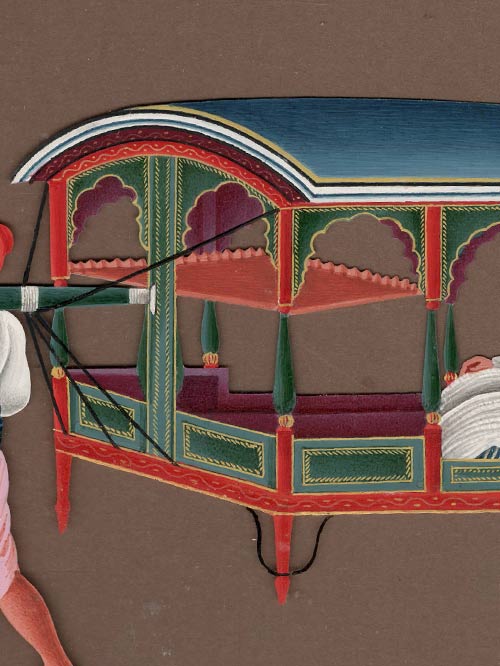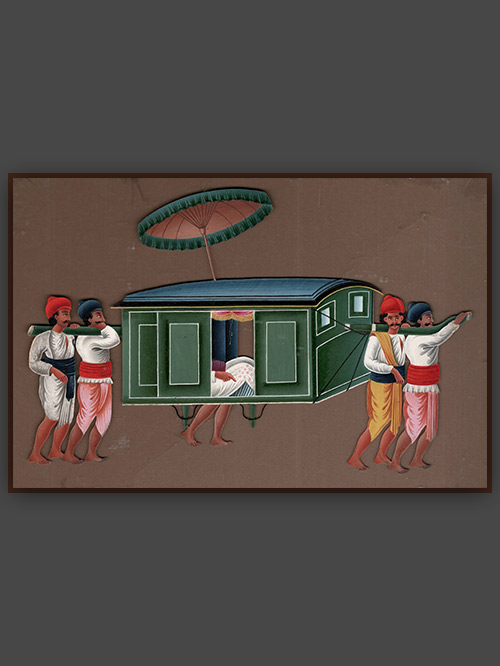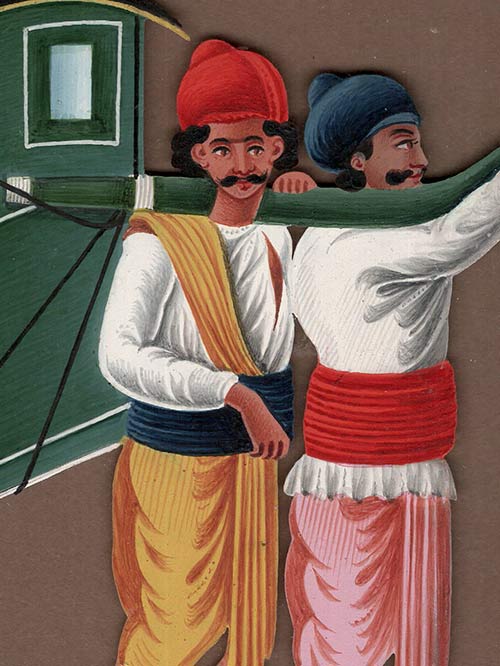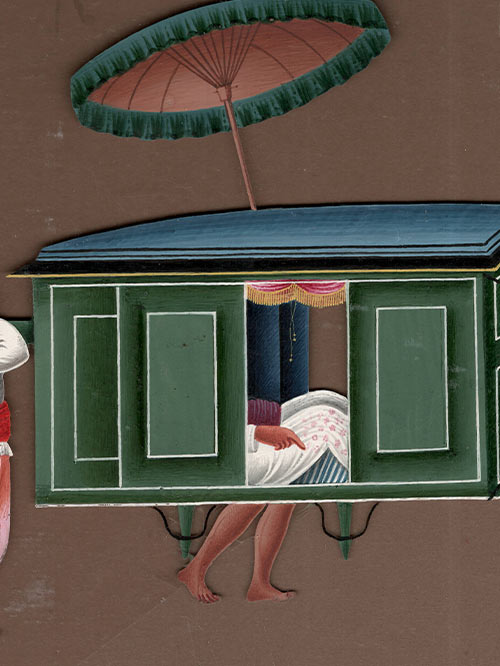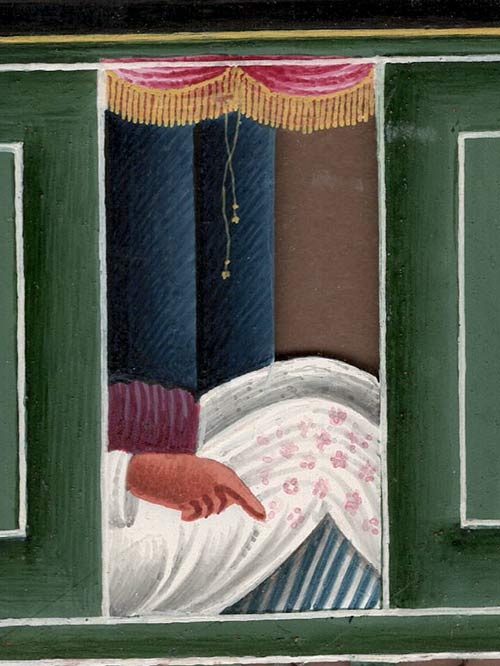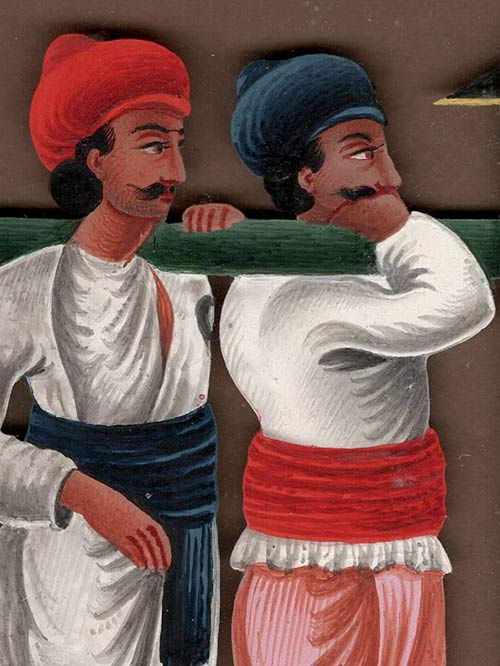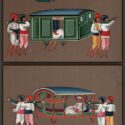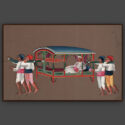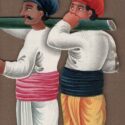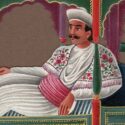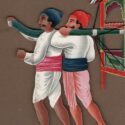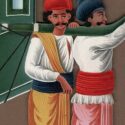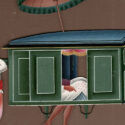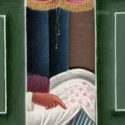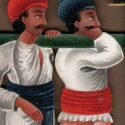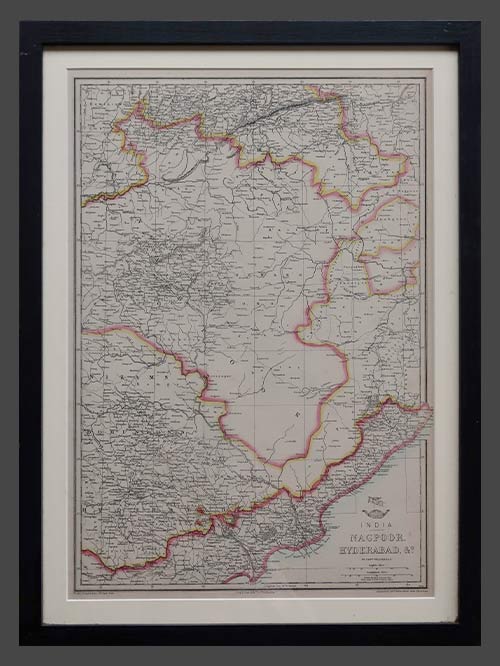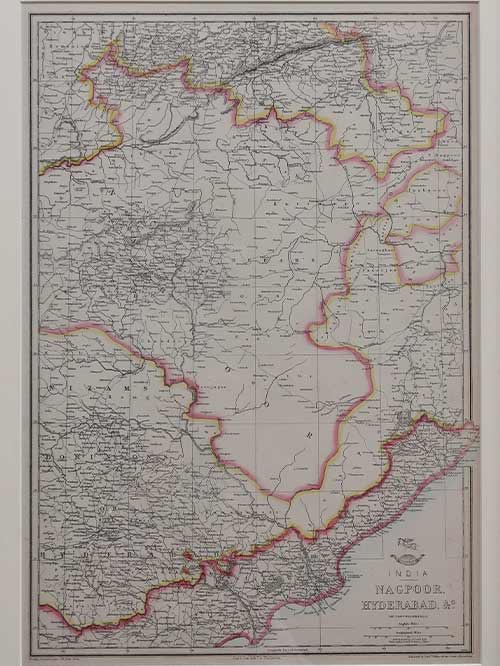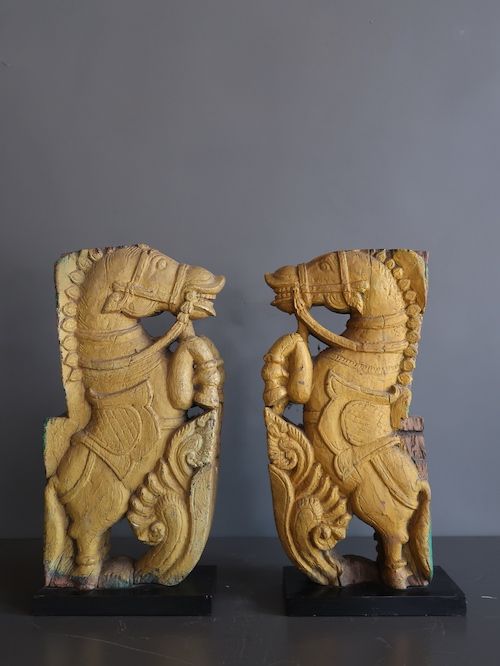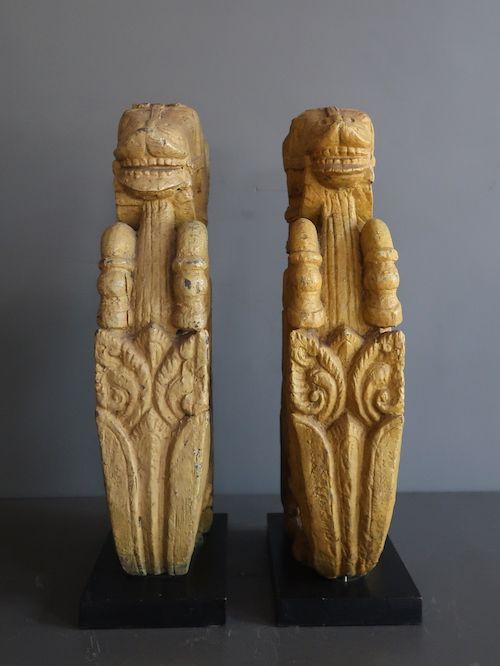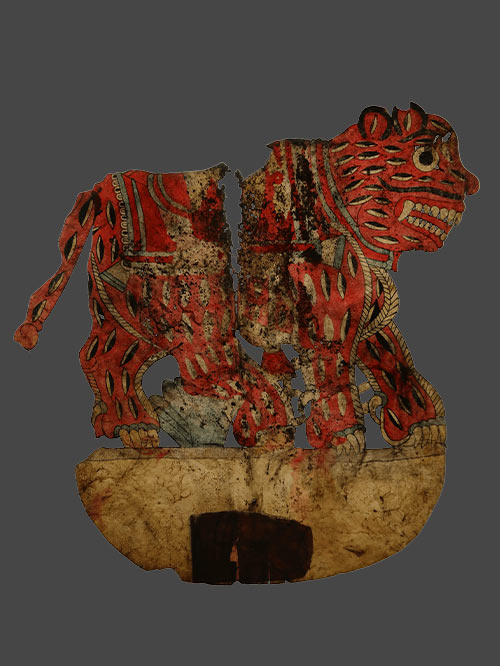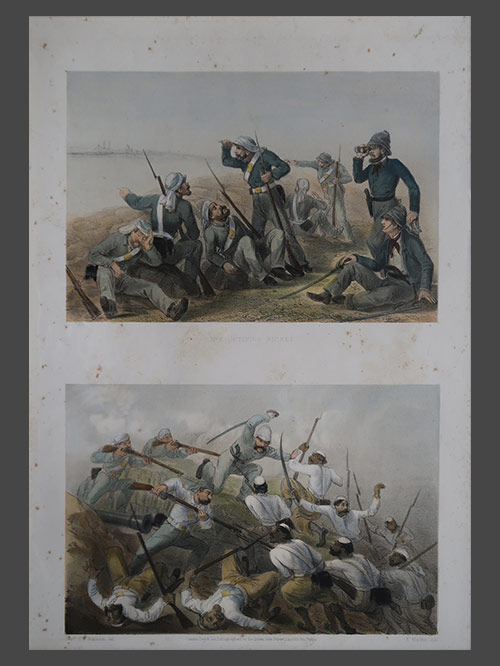Pair of Palanquins
Patna (Eastern India)
Pigments on Mica
A charming and finely painted pair of mica paintings of palanquins carried by colourfully dressed palanquin bearers and a partially obscured parasol bearer. The closed palanquin affording only a glimpse of its seated patron, the open palanquin occupied by an elegantly dressed gentleman reclining against a large bolster wearing a floral patterned shawl.
Under the Mughals, Patna had never been a great artistic centre and although its Muhammadan governors had employed Mughal artists, there is no evidence that any strongly marked local style had developed. Yet Patna, like Murshidabad, was undergoing a social revolution and various circumstances in the later eighteenth century were to make it a centre of Indian-British painting. As a result of its increasing prosperity, a number of artists of the Kayasth caste were attracted to Patna from Murshidabad. One of these was a certain Sewak Ram, who had migrated there by 1790. He began to produce sets of occupations as well as large paintings of ceremonies and festivals. One such set, now in the India Office Library, was purchased by Lord Minto, while a painting from a similar set in the Indian Department of the Victoria and Albert Museum was acquired by Lord Amherst when he was Governor-General (August 1823 to March 1828). British taste in the early nineteenth century shows itself in both subjects and colour range – sepia wash enlivened with touches of brighter colour – adopted by the Patna artists.
Individual Sizes (cms): 11.5(H) x 18(Diam)
Individual Size (inches): 4.5(H) x 7(Diam)


